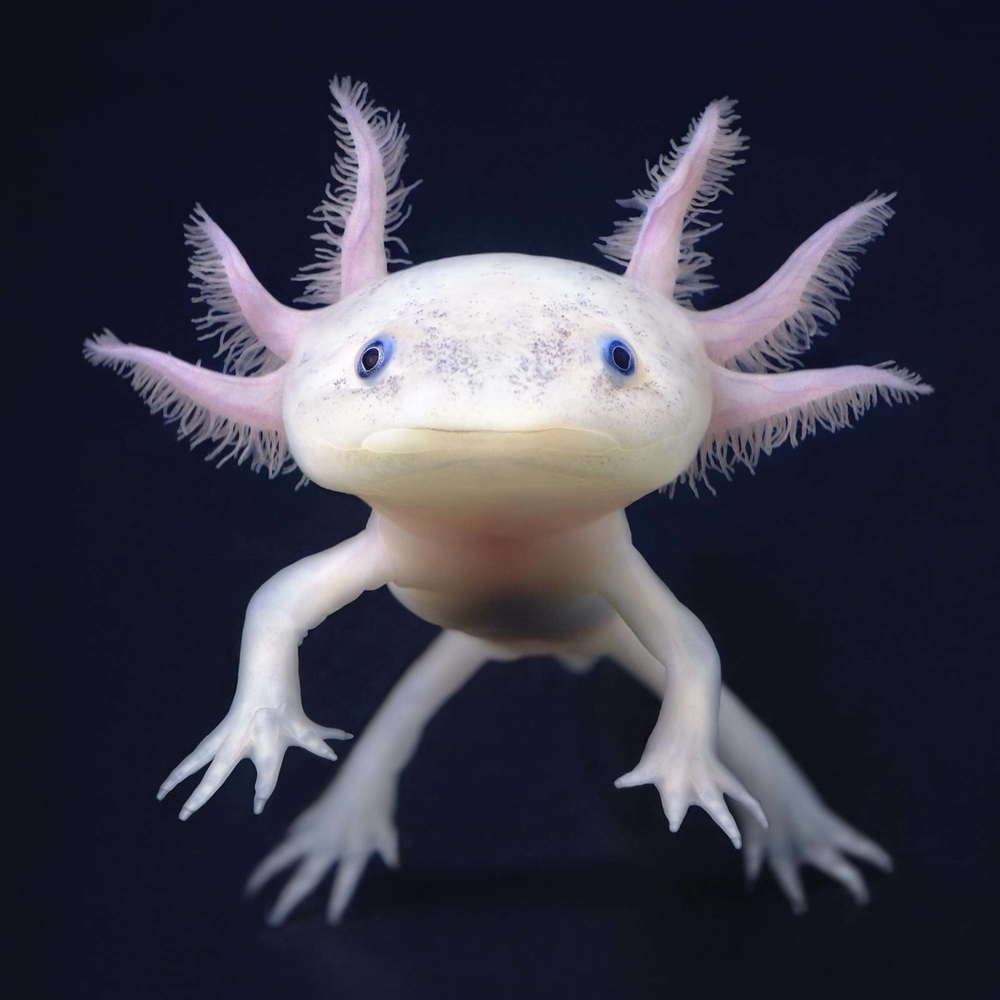Axolotls, Known as Water Puppies, Spend Their Entire Life Submerged Underwater
Posted on Categories Discover Magazine

Axolotls are perhaps the most instantly recognizable amphibians in the world. At once cute, curious, and infinitely fascinating due to their unique biological traits, these ever-young creatures capture the imagination.
Axolotls are a type of salamander, endemic to Mexico and only found in two places; the waterways and canals of Lake Xochimilco and Lake Chalco around Mexico City. They are often photographed as seemingly grumpy or with a joyful, childlike grin.
Their infinite likability aside, they are also fascinating creatures. Unlike other salamanders, the axolotl doesn’t go through metamorphosis and spends its entire life submerged in its watery habitat.
Axolotls Retain Juvenile Features
Due to this peculiar lifecycle, axolotls are variously known as “water monsters,” “water dogs,” or “water puppies” – a translation from the Nahuatl language, but the creature’s scientific name is Ambystoma mexicanum.
Whilst living an aquatic lifestyle, axolotls retain their juvenile features; a process called neoteny. They also develop lungs and use their distinctive frilly gills to breath underwater. In the wild, they can live for up to 15 years and reach a size of 10 inches, or 30 centimeters in length. The species consumes a varied diet, feasting on mollusks, small fish, and insects.
Axolotls are actually capable of metamorphosis – scientists have induced the process in captive animals – and after doing so they develop features that would allow them to live on land. But in the wild, this just doesn’t happen. Exactly why they have developed this particular lifestyle is hard to pin down.
Read More: What the Axolotl’s Limb-Regenerating Capabilities Have to Teach Us
Evolutionary Benefits to Staying Submerged
Luis Zambrano, a biologist and director of the Ecological Restoration Laboratory at the National Autonomous University of Mexico, explains that it could be that the species’ particular habitat doesn’t go through a wet-dry cycle.
“Some animals in the family Ambystomidae have to leave the water, partly because the wetland they live in dries out during the dry season,” Zambrano says, adding that there is speculation that one reason axolotls may not leave the water is because the evolutionary benefits of staying outweighed those of moving on to land where they may have run greater risk of predation.
“That is one of the possibilities, but this is speculative and requires further research,” Zambrano adds.
Beyond their remarkable life cycle, axolotls are renowned for their incredible ability to regrow tissue, organs, and even entire body parts. Scientists are studying this to better understand the process, with the ultimate goal of harnessing its ability for human beings.
Read More: Evolutionary Insight: Inside the Brains of Reptiles and Amphibians
Conservation for Axolotls
Though fascinating for their unique biological traits, they also have cultural importance in Mexico. According to legend, Xolotl, the Aztec god of fire and lightning and twin brother of Quetzalcóatl, morphed himself into various forms, including a salamander, to escape sacrifice that would allow the sun and moon to move through the sky. He was eventually captured and the axolotl also came to be a delicacy, which is still consumed in Mexico to this day.
Even with their cultural importance, the species is highly endangered in the wild and are critically endangered according to the International Union for the Conservation of Nature. It’s thought that less than 1,000 may remain in the wild.
That’s primarily because of degradation and pollution of the aquatic habitat that is so critical for its survival, says Zambrano who is part of a team working to restore the wetlands where the remaining populations remain.
“To preserve the axolotl, you have to preserve the habitat,” he says. “Basically, that means returning the land to how we used it 50 years ago.”
Zambrano and colleagues are working to ensure that this peculiar species can continue to live out its ever-young life submerged in the waters around Mexico City. Though there are large number of axolotls in captivity – kept as pets, sold as food, or as research subjects – this precarious position in the wild prompted Zambrano and colleagues to release a call to save them, lest they slip into extinction.
“The axolotl can’t be saved in tanks. It’s like trying to preserve polar bears in fridges,” Zambrano says. “By protecting the axolotl and its habitat we are preserving a very important species that is part of our culture, but we also many other species as well.”
Read More: Scientists Are Trying to Save These Animals From Extinction
Article Sources
Our writers at Discovermagazine.com use peer-reviewed studies and high-quality sources for our articles, and our editors review for scientific accuracy and editorial standards. Review the sources used below for this article:
Sean Mowbray is a freelance writer based in Scotland. He covers the environment, archaeology, and general science topics. His work has also appeared in outlets such as Mongabay, New Scientist, Hakai Magazine, Ancient History Magazine, and others.